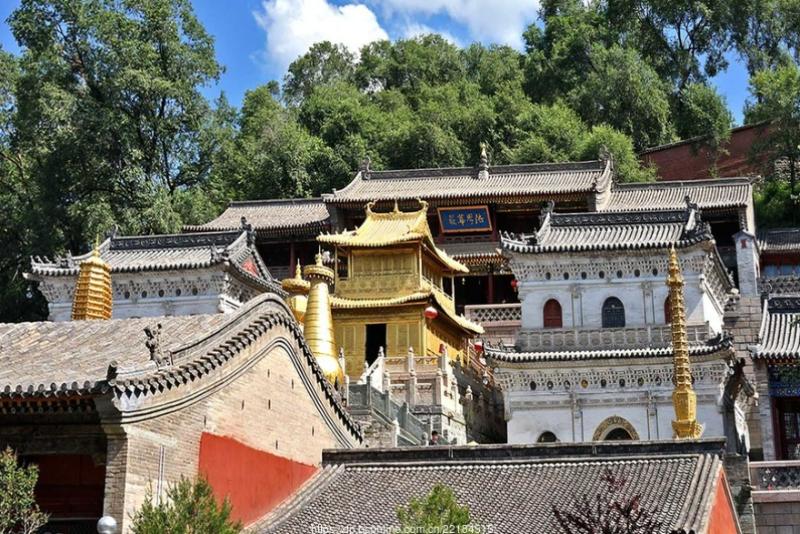Xiantong Temple

Mount Wutai: Xian'tong Temple - Buddhist Holy Land and Cultural Treasure
Mount Wutai, the foremost of China's four famous Buddhist mountains, boasts a long history of Buddhist culture. Among them, Xian'tong Temple, the oldest temple on Mount Wutai, holds immense historical, architectural, cultural, and artistic value, attracting believers and tourists from around the world.
I. The Historical Origins of Xian'tong Temple
Xian'tong Temple, originally known as "Da Fu Lingwu Temple," was built in the 17th year of Emperor Xiaowen's Taihe reign of the Northern Wei Dynasty (493 AD), marking a history spanning over 1,500 years. The name "Xian'tong" is derived from the Buddhist scripture "Dazhidu Lun" (Great Treatise on Perfect Wisdom), referring to "Xian'tong Yiqie Zhi" (the wisdom that penetrates everything).
- Northern Wei Dynasty: During its initial construction, Xian'tong Temple was grand in scale, housing numerous Buddhist halls and monk's quarters, becoming the center of Buddhism on Mount Wutai.
- Tang Dynasty: During the reign of Emperor Taizong of the Tang Dynasty, Xian'tong Temple suffered decline. However, it was rebuilt during Emperor Xuanzong's Kaiyuan reign, solidifying its position as the most prominent temple on Mount Wutai.
- Song, Yuan, Ming, and Qing Dynasties: Xian'tong Temple underwent numerous renovations and expansions throughout these periods, receiving varying degrees of attention and development.
II. The Architectural Layout of Xian'tong Temple
Xian'tong Temple covers approximately 40,000 square meters. Its buildings are arranged harmoniously, embodying the essence of ancient Chinese architecture.
- Mountain Gate: This magnificent structure, flanked by imposing stone lions, serves as the entrance to Xian'tong Temple.
- Hall of Heavenly Kings: This first hall houses the Maitreya Buddha, the Four Heavenly Kings, and the Bodhisattva Weituo.
- Great Hall of Buddha: As the main hall of Xian'tong Temple, it houses the Sakyamuni Buddha, representing the highest belief in Buddhism.
- Manjusri Hall: Dedicated to Manjusri Bodhisattva, this hall is one of the most important on Mount Wutai, attracting numerous believers for pilgrimage.
- Other Halls: The temple also houses halls dedicated to Guanyin (Avalokiteshvara), Dizang (Ksitigarbha), Arhats, and a Sutra Repository. These halls provide comprehensive functions, forming a complete Buddhist temple system.
III. The Cultural and Artistic Value of Xian'tong Temple
Xian'tong Temple is not only a Buddhist holy land but also a treasure trove of rich cultural and artistic value.
- Precious Relics: The temple houses a vast collection of precious relics, including Buddhist statues, scriptures, inscriptions, paintings, and more, among which the statue of Manjusri Bodhisattva stands out.
- Buddhist Art: The temple's unique architectural style, intricate carvings, and exquisite paintings showcase the achievements of ancient Chinese Buddhist art.
- Buddhist Culture: As the Buddhist center of Mount Wutai, Xian'tong Temple has preserved rich Buddhist culture, hosting various Buddhist activities and disseminating Buddhist thoughts and spirit.
IV. Conclusion
Xian'tong Temple, a prominent landmark of Mount Wutai, captivates attention with its historical, architectural, cultural, and artistic value. It is not only a pilgrimage destination for Buddhist believers but also a crucial component of China's cultural treasure trove. As time marches on, Xian'tong Temple will continue to showcase the charm of Buddhist culture to the world and contribute further to the preservation of Chinese culture.